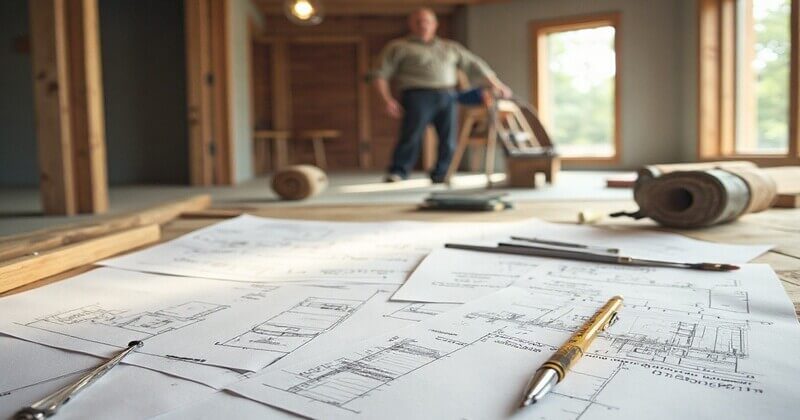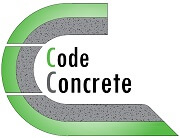The Ultimate Building Materials List: Your Comprehensive Guide

Last updated on July 20th, 2025
Choosing the right building materials is the cornerstone of any successful construction project, whether it’s a dream home, a sturdy shed, or a commercial complex. The materials you select impact everything: cost, durability, energy efficiency, aesthetics, maintenance, and even the project timeline. Navigating the vast array of options can be daunting. This comprehensive guide provides an essential building materials list, categorized by construction phase and function, along with key considerations to inform your choices.
Why Your Building Materials List Matters (Beyond Just Cost)

While budget is crucial, focusing solely on the cheapest option is a recipe for long-term headaches. Consider these factors:
- Structural Integrity & Safety: Materials must meet building codes and withstand loads (wind, snow, seismic), ensuring occupant safety.
- Durability & Lifespan: How long will the material last before needing repair or replacement? Consider climate and wear-and-tear.
- Energy Efficiency: Insulation, window quality, and thermal mass significantly impact heating and cooling costs (your operational budget).
- Maintenance Requirements: Some materials (vinyl siding) need little upkeep, while others (wood siding, natural stone) demand regular care.
- Aesthetics & Design Goals: Materials define the look and feel of the structure. Choices should align with architectural style and personal taste.
- Environmental Impact: Sustainability is increasingly important. Consider embodied energy, recyclability, renewability, and local sourcing.
- Availability & Lead Times: Some specialty materials may have long lead times, potentially delaying your project.
- Skill Level Required: Installation complexity varies. DIY-friendly options differ significantly from those needing specialized tradespeople.
The Ultimate Building Materials List: Categorized for Clarity
Choosing the right building materials is the cornerstone of any successful construction project, whether you’re building your dream home, adding a garage, or tackling a renovation. The sheer volume of options can feel overwhelming. This comprehensive guide cuts through the complexity, providing you with the definitive building materials list categorized by function, along with key considerations for selection, costs, and sustainability.
Getting your materials list right upfront is crucial for:
- Accurate Budgeting: Avoid costly surprises by knowing exactly what you need and its price.
- Project Planning & Timeline: Ensures materials arrive when needed, preventing delays.
- Quality Control: Selecting appropriate, high-quality materials ensures durability, safety, and performance.
- Sustainability Goals: Enables conscious choices about the ultimate building materials list.
Choosing the right building materials is like selecting the perfect ingredients for a master recipe. The quality, suitability, and combination directly determine the strength, durability, functionality, beauty, and cost of your finished structure – whether it’s a dream home, a sturdy garage, or a commercial space. This comprehensive guide serves as your essential building materials list, categorized for clarity and packed with insights to empower your next project.
A well-planned materials list is far more than a shopping checklist. It’s a critical project management tool that:
- Controls Costs: Prevents budget overruns by allowing accurate estimation and avoiding last-minute premium purchases.
- Ensures Availability: Helps procure materials in advance, preventing delays due to backorders.
- Guarantees Compatibility: Ensures components work together structurally and aesthetically.
- Optimizes Performance: Allows selection based on climate, usage, energy efficiency, and maintenance needs.
- Simplifies Logistics: Streamlines delivery schedules and on-site organization.
- Minimizes Waste: Enables precise ordering, reducing excess and disposal costs.
The Comprehensive Building Materials List: Category by Category

Let’s break down the essential materials needed for most construction projects, from the ground up:
I. Site Preparation & Foundation
Excavation & Grading:
- Erosion Control: Silt fencing, erosion control blankets, wattles.
- Temporary Utilities: Jobsite fencing, portable toilets, temporary power poles.
- Clearing & Grubbing: Equipment (often rented).
Foundation Systems:
- Concrete: Ready-mix concrete (specified by strength, e.g., 3000 psi, 4000 psi), rebar (various sizes: #3, #4, #5, #6), wire mesh, concrete forms (wood, metal, or insulated concrete forms – ICFs), form ties, concrete sealers/curing compounds.
- Masonry: Concrete blocks (CMU – various sizes and densities), mortar mix, grout, masonry reinforcement (ladder wire, joint reinforcement).
- Waterproofing & Drainage: Foundation coatings (bituminous, crystalline), drainage board, foundation drain pipe (perforated, socked), drainage gravel, sump pump and basin (if needed), vapor barrier (polyethylene sheeting).
- Backfill: Clean fill dirt, compactable gravel.
II. Structural Framing
Wood Framing (Most Common Residential):
- Lumber: Dimensional lumber (2×4, 2×6, 2×8, 2×10, 2×12) for studs, plates, joists, rafters. Engineered wood products: Laminated Veneer Lumber (LVL), Parallel Strand Lumber (PSL), Laminated Strand Lumber (LSL) for beams/headers; I-Joists for floors/roofs; Glulam beams. Plywood or OSB (Oriented Strand Board) for sheathing (walls, roof, floors).
- Fasteners & Connectors: Nails (common, sinker, finish, ring shank), screws (deck, structural, drywall), joist hangers, hurricane ties, post bases, anchor bolts, construction adhesive.
Steel Framing:
- Components: Light gauge steel (LGS) studs, tracks, joists, headers (various gauges and depths).
- Fasteners: Self-drilling/tapping screws, clips, bolts.
Concrete/Masonry Framing: (Often used with wood or steel floors/roofs)
- Materials: Concrete, rebar, CMU blocks (as load-bearing walls).
III. Building Envelope (Exterior Shell)
Roofing:
- Underlayment: Felt paper (#15, #30), synthetic underlayment (higher performance).
- Shingles/Cladding: Asphalt shingles (3-tab, architectural), metal roofing (panels, shingles, standing seam), clay/concrete tiles, slate, synthetic slate, cedar shakes, EPDM (rubber) membrane (flat roofs), TPO/PVC membrane (flat/low slope roofs).
- Flashing: Step flashing, valley flashing, drip edge, chimney flashing, vent pipe flashing (metal: aluminum, copper, galvanized steel; or synthetic).
- Vents: Ridge vents, soffit vents, box vents, turbine vents, powered attic vents.
- Gutters & Downspouts: Aluminum, vinyl, steel, copper (K-style, half-round).
Exterior Walls:
- Siding:
- Vinyl Siding: Panels, shakes, accessories (J-channels, corners, starter strips).
- Fiber Cement Siding: Panels (siding boards), shingles, trim boards.
- Wood Siding: Clapboard (bevel siding), shingles, shakes, board-and-batten.
- Metal Siding: Panels (corrugated, vertical), shingles.
- Brick Veneer: Bricks, mortar.
- Stone Veneer: Natural or manufactured stone, mortar.
- Stucco: Portland cement plaster base coats, finish coat, lath, weep screed.
- Sheathing: Plywood, OSB, rigid foam insulation (also provides bracing).
- Weather Barrier: Housewrap (Tyvek, Typar), felt paper, fluid-applied membrane.
- Trim: Fascia boards, soffit panels, corner boards, window/door trim (PVC, wood, composite).
- Siding:
Windows & Exterior Doors:
- Windows: Vinyl, wood, aluminum, fiberglass, composite frames. Double-pane or triple-pane insulated glass units (IGUs), Low-E coatings, argon gas fill. Various styles (double-hung, casement, sliding, awning, picture).
- Exterior Doors: Steel, fiberglass, wood (solid core recommended). Pre-hung units (frame, door, threshold). Storm doors.
- Flashing & Sealants: Window/door flashing tape, sill pans, flexible exterior caulk (silicone, polyurethane).
IV. Interior Construction
Walls & Ceilings:
- Framing: Studs (2×4 or 2×6), top/bottom plates, blocking (wood or steel).
- Sheathing: Drywall (gypsum board – 1/2″, 5/8″ fire-rated), cement board (wet areas), green board (moisture-resistant drywall).
- Insulation: Fiberglass batts, mineral wool batts, blown-in cellulose/fiberglass, spray foam (open/closed cell).
Interior Doors:
Solid core or hollow core. Wood, MDF, composite. Pre-hung units. Door hardware (hinges, knobs/levers, locksets).
Flooring:
- Subfloor: Plywood, OSB, concrete slab.
- Underlayment: Foam, cork, felt, specialized acoustic underlayment.
- Finish Flooring:
- Hardwood: Solid, engineered (oak, maple, walnut, etc.).
- Laminate: High-pressure laminate planks/tiles.
- Vinyl: Sheet vinyl, Luxury Vinyl Plank (LVP), Luxury Vinyl Tile (LVT).
- Tile: Ceramic, porcelain, natural stone (granite, marble, slate, travertine).
- Carpet: Broadloom, carpet tiles, various fibers (nylon, polyester, wool).
- Concrete: Polished, stained, sealed.
Stairs:
Stringers, treads, risers, newel posts, balusters, handrails (wood, metal, glass). Stair nosing.
V. Insulation & Air Sealing
Insulation Types (Location Specific):
- Attic: Blown-in cellulose/fiberglass, fiberglass/mineral wool batts, spray foam.
- Walls: Fiberglass/mineral wool batts, blown-in cellulose, spray foam, rigid foam boards.
- Floors: Fiberglass/mineral wool batts, rigid foam boards, spray foam.
- Basement/Crawlspace: Rigid foam boards (interior/exterior), spray foam (interior walls/sill plate).
Air Sealing Materials:
Caulk (silicone, acrylic latex, fireblock), spray foam (can-foam for gaps < 3″), weatherstripping (door/window seals), gaskets (electrical boxes), housewrap tape.
VI. Plumbing Systems
Supply Lines:
PEX tubing (most common), CPVC pipe, Copper pipe (Type L, Type M), fittings (elbows, tees, couplings, shut-off valves), pipe hangers/clamps.
Drain, Waste, & Vent (DWV):
PVC pipe (schedule 40 – various diameters: 1.5″, 2″, 3″, 4″), ABS pipe (in some regions), fittings (sanitary tees, wyes, cleanouts, traps), pipe hangers/clamps.
Fixtures:
Toilets, sinks (vanity, kitchen, utility), faucets, shower valves, shower heads, bathtubs, garbage disposals, water heaters (tank, tankless), water softeners/filters.
Other:
Water meter, pressure reducing valve (PRV), expansion tank (for closed systems), pipe insulation.
VII. Electrical Systems
Wiring:
Non-metallic sheathed cable (Romex – NM-B: 14/2, 12/2, 12/3, 10/2, etc.), individual THHN/THWN wires (for conduit), low-voltage wiring (Cat5e/Cat6, thermostat, security).
Conduit:
EMT (thin-wall), PVC (schedule 40/80), flexible conduit (where needed).
Panels & Breakers:
Main service panel, sub-panels, circuit breakers (AFCI, GFCI, standard).
Boxes:
Electrical boxes (plastic or metal – single gang, double gang, octagon, round, fan-rated), cover plates.
Devices:
Switches, outlets (standard, GFCI, AFCI, USB), dimmers, light fixtures (recessed, surface mount, pendants), ceiling fans, doorbells, smoke/CO detectors.
Other:
Wire nuts, cable staples/clamps, grounding wire/clamps, surge protectors.
VIII. HVAC (Heating, Ventilation, Air Conditioning)
Equipment:
Furnace (gas, electric, oil), Air Conditioner (central, mini-split), Heat Pump, Air Handler, Boiler, Ductless Mini-Splits.
Distribution:
- Ductwork: Sheet metal ducts, flexible ducting, duct board, registers, grilles.
- Hydronic: PEX tubing (for radiant heat), baseboard radiators, fin-tube radiators.
Ventilation:
ERV (Energy Recovery Ventilator), HRV (Heat Recovery Ventilator), exhaust fans (bath, kitchen), intake vents.
Controls:
Thermostat (programmable, smart), zone dampers/controls.
Refrigerant Lines:
Copper tubing, insulation.
Other:
Filters, condensate drain lines/pumps, flue pipes (for combustion appliances).
IX. Drywall & Finishes
- Drywall: Standard 1/2″ and 5/8″ (fire-rated) sheets, corner bead (metal or paper-faced).
- Joint Compound: Setting-type (hot mud) for embedding tape, lightweight all-purpose for finishing.
- Drywall Tape: Paper tape (most common), mesh tape.
- Primer: Drywall primer/sealer (PVA or acrylic).
- Paint: Interior paint (latex – flat, eggshell, satin, semi-gloss), exterior paint (acrylic or elastomeric), trim paint (semi-gloss or gloss). Primer for surfaces needing it (wood, metal).
- Trim & Molding: Baseboards, crown molding, chair rail, casing (window/door), shoe molding. Materials: MDF, wood, PVC, polyurethane.
- Cabinetry: Kitchen cabinets, bathroom vanities (stock, semi-custom, custom). Materials: plywood, particleboard, MDF, solid wood.
- Countertops: Laminate, solid surface (Corian), quartz (engineered stone), granite/marble (natural stone), butcher block, concrete, tile.
- Backsplashes: Tile (ceramic, porcelain, glass, mosaic), stone, stainless steel, glass panels, painted drywall.
- Tile Setting Materials: Thinset mortar, grout (sanded, unsanded, epoxy), tile spacers.
X. Specialized Materials & Finishing Touches
- Fireplaces & Chimneys: Firebrick, firebox components, chimney flue liner (stainless steel, clay tile), hearth materials (stone, tile, concrete), mantels.
- Hardware: Cabinet knobs/pulls, door stops, towel bars, toilet paper holders, shower curtain rods, closet rods/shelving.
- Appliances: Range/oven, cooktop, microwave, refrigerator, dishwasher, range hood, washer, dryer.
- Landscaping (Tying into Structure): Decking materials (pressure-treated lumber, composite, cedar), patio materials (pavers, concrete, stone), retaining wall blocks, exterior lighting fixtures, hose bibs (exterior faucets).
Key Considerations When Creating Your Building Materials List

- Project Scope & Design: A custom home demands different materials than a garage addition. Detailed architectural plans and engineering specs are non-negotiable for accurate lists.
- Local Building Codes & Permits: Codes dictate crucial requirements (e.g., structural lumber size, insulation R-value, fire ratings, and electrical wire gauge). Always verify compliance.
- Climate & Environment:
- Moisture/Humidity: Requires moisture-resistant materials (treated lumber, concrete board, specific sidings/flashings, vapor barriers).
- Temperature Extremes: Demands higher insulation R-values and materials with low thermal expansion/contraction.
- Seismic/Wind Zones: Mandates specific structural connectors, bracing, and impact-resistant materials.
- Termite/Pest Areas: Necessitates treated lumber or alternative materials (steel, concrete).
- Performance Needs:
- Energy Efficiency: High-performance windows, superior insulation, air sealing materials, energy-efficient HVAC/appliances.
- Durability & Maintenance: Consider lifespan and upkeep (e.g., fiber cement vs. wood siding, quartz vs. marble countertops).
- Acoustics: Sound-damping insulation, resilient channels for drywall, solid-core doors.
- Indoor Air Quality: Low-VOC paints, sealants, and adhesives; formaldehyde-free materials; proper ventilation systems.
- Aesthetics: Materials define the look and feel. Ensure colors, textures, and styles are cohesive and match your vision.
- Sustainability: Increasingly important. Look for:
- Recycled Content: Steel, cellulose insulation, fly ash in concrete, recycled glass countertops/tiles.
- Rapidly Renewable: Bamboo flooring, cork underlayment.
- Locally Sourced: Reduces transportation emissions.
- Low Embodied Energy: Materials requiring less energy to produce (e.g., wood vs. steel/concrete in some applications).
- Durability: Longer-lasting materials reduce waste over time.
- Budget: Be realistic. Research costs thoroughly. Prioritize structural integrity and envelope performance. Consider lifecycle costs (cheaper upfront may cost more in maintenance/energy).
- Availability & Lead Times: Factor in potential supply chain delays, especially for custom items, windows, or specialty materials. Order critical items early.
Pro Tips for Managing Your Building Materials List

- Use Technology: Leverage spreadsheet software (Excel, Google Sheets) or specialized construction estimating/takeoff software for organization, calculations, and easy updates. Many apps sync with supplier catalogs.
- Collaborate: Share the list with your architect, engineer, contractor, and key subcontractors (electrician, plumber, HVAC) for input and accuracy. They often spot omissions or suggest alternatives.
- Break it Down: Organize by project phase (Site Prep, Foundation, Framing, etc.) and trade (Plumbing, Electrical, etc.). Use clear categories and subcategories.
- Be Specific: Don’t just list “lumber.” Specify species, grade, dimensions, treatment (e.g., “2×6 SPF Stud Grade #2, 92 5/8″”, PT Ground Contact”). For concrete, specify mix design and strength. For paint, specify sheen and base.
- Quantify Accurately: Measure twice, order once. Use plans to calculate square footage, linear footage, or counts. Always add 10-15% waste factor for materials like flooring, siding, shingles, and drywall. Account for cuts, mistakes, and future repairs.
- Source Wisely: Get quotes from multiple suppliers. Consider big-box stores, lumberyards, specialty distributors, and online sources. Factor in delivery costs and schedules. Check return policies for unused materials.
- Track Deliveries & Inventory: Have a designated storage area. Protect materials from weather and theft. Check deliveries against packing slips and your list immediately. Implement a system to track what’s used and what’s left.
- Stay Flexible: Be prepared for substitutions if your first-choice material is unavailable. Ensure any substitutions meet or exceed specifications and are approved by relevant parties.
The Future of Building Materials

Innovation is constant. Watch for wider adoption of:
- Mass Timber: Cross-Laminated Timber (CLT), Glulam for larger structural applications (sustainable, strong).
- Advanced Insulation: Aerogels, vacuum insulated panels (VIPs) for ultra-high R-values in thin profiles.
- Smart Materials: Self-healing concrete, phase-change materials (PCMs) for thermal mass, electrochromic glass (tintable windows).
- Bio-Based Materials: Hempcrete, mycelium (mushroom) composites, advanced bamboo products.
- 3D Printing: Concrete printing for foundations, walls, and complex shapes.
Conclusion: Your Blueprint for Success
A meticulously crafted building materials list is the unsung hero of a successful construction project. It transforms vision into tangible reality while safeguarding your budget, timeline, and quality. By understanding the vast array of materials available, carefully considering performance, environmental, and aesthetic factors, and employing smart management strategies, you empower yourself to make informed decisions. Whether you’re a seasoned contractor or a homeowner embarking on a DIY journey, this comprehensive guide provides the foundation for selecting the perfect “ingredients” to build something strong, beautiful, and enduring. Remember, the time invested in creating and managing your materials list pays exponential dividends throughout the entire construction process. Now, go build with confidence!




